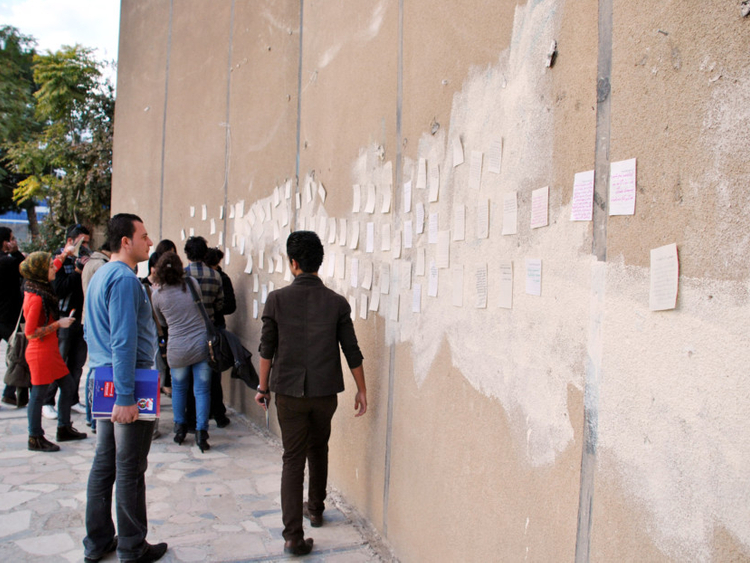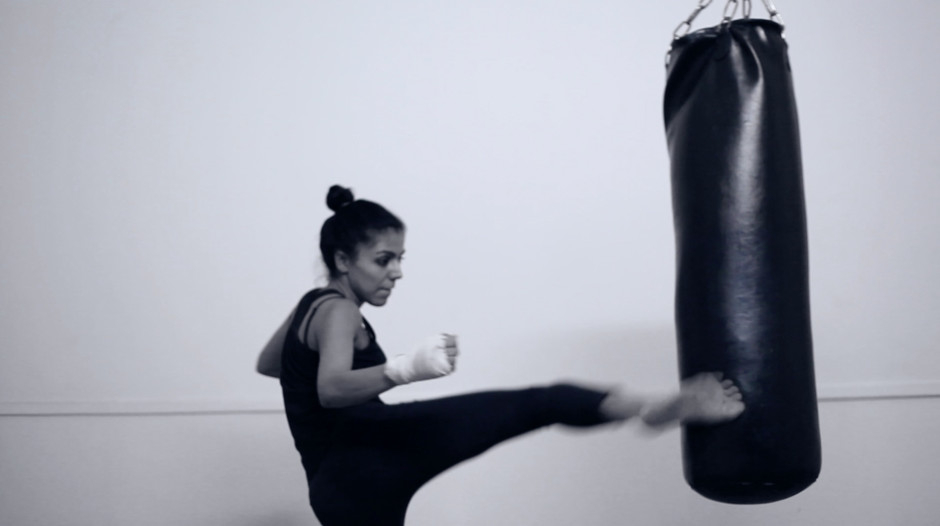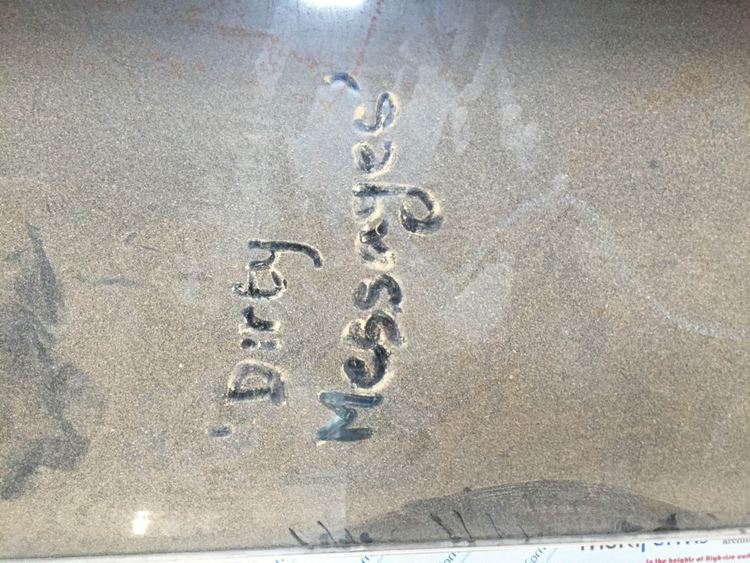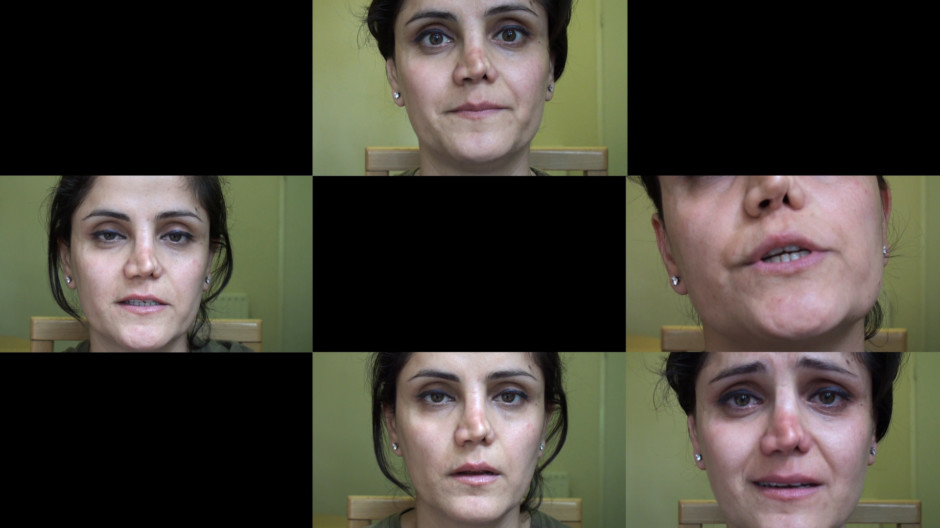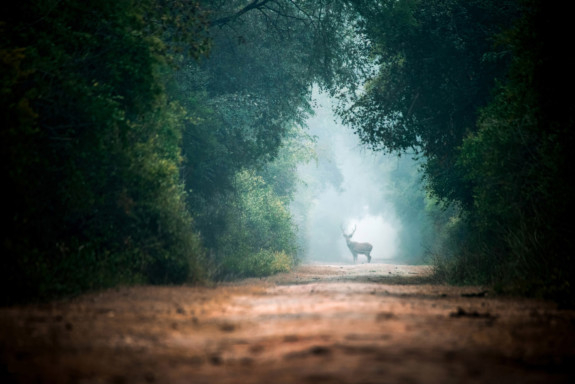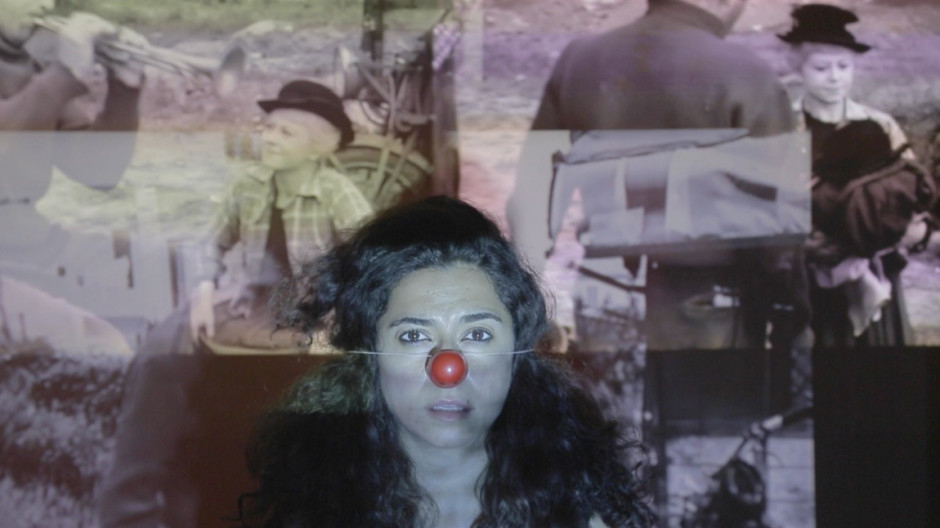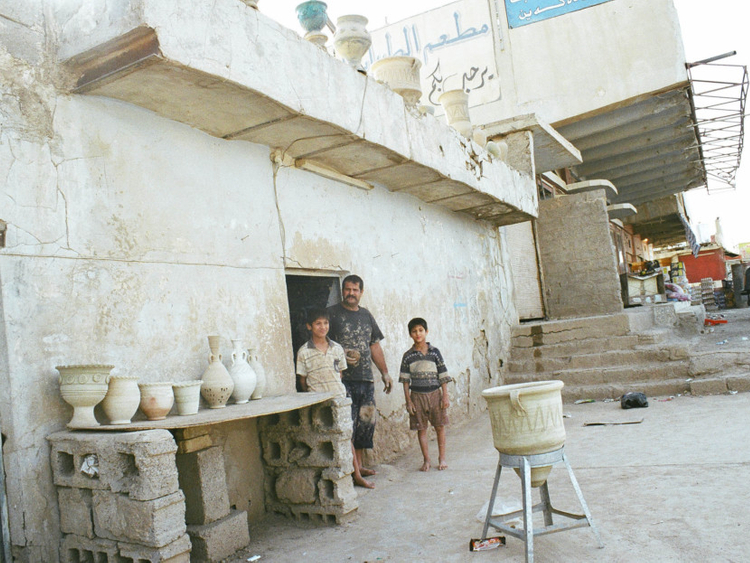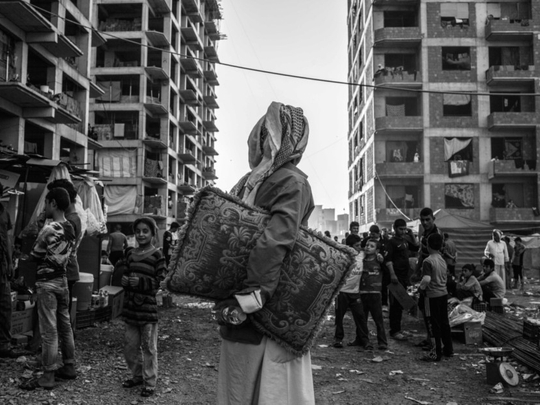
Visitors who seek out artist-in-residence Azar Othman at this unusual exhibition on Middle Eastern art in northern England might feel disappointed. Far from being “in residence”, he is thousands of miles away in Iraq.
Othman is one of 18 artists from the Middle East and North Africa who are taking part in a unique exhibition at the Yorkshire Sculpture Park, in which all the works have been delivered electronically. The show — “Beyond Boundaries: Art by Email” — was embraced by the YSP when it became evident that visa restrictions imposed by the EU made it nigh impossible for any artists in the troubled region to come to the UK.
Curator Dr Helen Pheby says: “I first visited artists in Iraqi Kurdistan seven years ago and discovered that there was some really strong work being made despite the chaos that surrounded them. Sadly, the rigmarole involved getting permission for them to come here is too great, but technology means we can harness and display their talents so that, though the people cannot travel, the art can.”
The gallery put out an open call to artists across the region with the brief to enter an original artwork which reflects the challenges they face.
One to be chosen was Othman — but how could he fulfil his role without leaving his home in Sulaimani? His contribution to the exhibition is a series of photographs documenting a performance he made in 2013 called “People’s Questions in a City” in which he invited residents to discuss current affairs and assess the way they thought the city was being run by answering such questions as “How much is the environment important to you?” or “Do you know what a city plan is?”
The replies were written down on paper and publicly displayed on walls in the city centre and used online by the artist to spread the word of their daily struggles, hopes and aspirations.
Visitors to the YSP do not have to feel left out, they can do something similar. Othman has reprised the same questions to the folk of Yorkshire who, using #ForAzar, can get involved in the debate by posting their replies in the Park grounds.
He writes: “It is a nice project. Culture needs more navigating and analysing and it should work on a global level more than in a closed frame. We need to exchange our knowledge and establish a new and healthy society. The main theme of my project is to encourage people to ask the questions and search for the answers that help them go beyond the boundaries that limit us.”
While this project seems perhaps concerned more with the implications of everyday rather than the turmoil of the region in which he lives, almost humdrum, he is keen to make it clear that he is living in a country where there is not “any obvious and clear future”.
“There is the continuous effort and stress of war and political action so directly or indirectly it will affect you and your work [art],” he says. “The events and happenings will ask the question how the artist should work and how he can solve the problems and save himself from this ambiguous situation and produce work of value. As we know in this region the main thing is politics and culture is a secondary quest.”
His situation is all too familiar to his fellow artists. At the extreme, the world has recoiled from images from the Middle East; the shattered streets of Aleppo, the gloating Facebook malevolence of extremists — these are horribly commonplace.
Adalet R. Garmiany, founder of ArtRole, an organisation set up to promote Middle Eastern artists, says: “The extremists have used technology to deliver their messages to frighten and recruit people but we too want to use power of the image to show the resilience, hope and creativity that thrives throughout the region.”
Skyping from Arbil, only 50 kilometres from Mosul where Iraqi forces are battling with Daesh (the self-proclaimed Islamic State of Iraq and the Levant), he says: “People still have hope here and want to continue with life — it’s a good message to send. In the UK and Europe we get the headlines, not the subtleties of existence in the region and most of the information is 90 per cent negative. The opportunity for an exhibition such as this to help clear feelings of misunderstanding from the European point of view is enormous.”
Garmiany, a British citizen of Kurdish descent who studied at the Hull School of Art and Design in Yorkshire, launched ArtRole in 2004 and worked with the YSP to select the exhibitors. “People think this country has been destroyed,” he says. “Yes, there is a conflict, but there is a life also and compared with Syria, Turkey and Iraq where much is on fire, this region is fantastic.”
Nonetheless Garmiany, who moved to Arbil five years ago, talks about “the project of fear” that pervades his community. “People are uncertain and insecure. They expect something bad to happen. They have lost relatives on the battlefield, thousands are dead and there are millions of refugees.”
At first glance, the image of a man in a yellow T-shirt floating through blue skies supported by brightly coloured balloons seems to contradict that pessimism, but Baris Seyitvan, 34, explains by e-mail how his entry “Isimsiz” (On the way to freedom) — far from being a happy snap as its bold colours might suggest — is an expression of his longing to escape the “tyranny of the state”.
“All my life I have been faced with wars — every day and every day non-stop,” says Seyitvan, who is also a curator of a small museum in his hometown, the Turkish Kurdistan city of Diyarbakir. “During the 1990s there was a great amount of tyranny. It increased day by day until today when it is worse than in the 1990s.
“The two works I sent to England were influenced by unexplained murders in Diyarbakır jail. It affected me psychologically because in the 1990s my father was put in the prison four times and he was tortured for 60 to 80 days.”
Since those dark times, the jail has been converted into a museum and Seyitvan often performed there as a clown to raise money for his art education. “When it was being turned into the museum, I would go there and sit for hours. People would say things like: ‘I came to visit my relatives in this jail’, ‘I lost my friend here’, ‘I was beaten up here’ or ‘I cried here’. As an artist, I witnessed that and it was a turning point for my work. In ‘Every stone wants freedom’, I have a stone that wants to be free, but on the other side there is a balloon which also wants to be free but can’t break loose from the stone.
“In time, I made this balloon a human and created ‘The way to freedom’. I also made an installation of 200 balloons in the garden of the jail. Every balloon symbolised a person. The garden, which had a sad atmosphere, was suddenly full of balloons. When people saw that, they felt very happy.”
He, however, is despairing. “This government is an enemy of art, especially Kurdish art,” he says. “Diyarbakır is a great city and its potential is vast. It was a cradle to 30 civilisations, but the government wants this city and its history to be wiped out. How can we cherish the construction of a common life belonging to all, under the shadow of banishment?”
Like Seyitvan most of the entrants are, understandably, motivated by the turmoil around them. Kurdish photographer Younes Mohammad, who has been working in Mosul, captures the pain — and the resilience — of that banishment that so many suffer. In his poignant “A Yezidi Refugee with his Pillow” an old man driven from his home by Daesh wanders lost and confused in a ruined city where he sleeps in a different place every night — a school, the streets, a construction site — with only a pillow for comfort.
If this work — in black and white — has a documentary edge, the contribution from Bnar Sardar seems gently evocative. In her deceptively sweet photograph, “The Garden of Eden is Likely to Disappear”, a calf nuzzles the ear of a child in an encampment of Marsh Arabs, the tribe who live in the wetlands of Iraq and Iran and were all but wiped out by Saddam Hussain in the late 1980s. Now their existence is threatened, not so much by violence, but by the construction of dams upstream in Syria and Turkey.
Other entries do not directly address the well-publicised conflicts and fears of the area. In “Taste: Receive Life’s Pure Secrets in Miracles” Egyptian Fathi Hawas has followed the pilgrimage of a Muslim group who cannot afford to travel to Makkah, and instead pray at a place set aside for the poor in the deserts of the Red Sea hinterland. These are striking black-and-white images which movingly dramatise the intensity of the pilgrims’ belief.
The boundaries of e-mail versatility are being stretched in a project by Sahand Hesamiyan from Tehran whose installation “Pardis” (Paradise) is being reproduced using a 3D printer.
The original, which is made of mirrored stainless steel, resembles cypress trees, symbols of purity and holiness in Iranian culture, and are hung from a ceiling so that viewers can walk through them on a “sacred journey”. The 3D version is being printed out once a week during the exhibition’s run, but while the original is 2.6 metres high it will be 30 centimetres and the closest technology can get to match its lustre will be a rendering in matte white polystyrene.
While Hesamiyan draws on his cultural heritage, Mohammad Khalid from Dubai takes inspiration from more mundane, contemporary sources. In “Dirty Messages” he reproduces some of the graffiti and anonymous scribbles found on unfinished buildings and abandoned construction projects in the city. Many sites have been left derelict and Khalid sees their windows as a platform for storytelling and for strangers to share their thoughts.
Another contributor who is taking a sideways look at his region is Iraqi Burhan Sabir, a painter and sculptor who depicts the ancient religion and social structures of Mesopotamian civilisations. In his impressionistic water colour “Istanbul” he has tried to combine the ancient spirituality of the city with the buzz of everyday life.
Mai Al Shazly from Egypt examines resistance and retaliation on one hand with dependency and community on the other in two videos that run concurrently. In “Undercurrents” the images contradict each other — one with the calming colours and sounds of the ocean the other full of discordant noise, tension and aggression.
A more specific reaction to the chaos of the region comes from documentary photographer Zardasht Osman who depicts fighters from Iraqi Kurdistan’s military forces standing in front of images from popular culture such as singer Shakira and actor Sylvester Stallone.
Osman says: “Deciding to live freely like a Westerner needs sacrifices. To know the meaning of freedom is to know the limits of it, and the boundaries of it should not be crossed. Life is tied with freedom, if we don’t have freedom, we don’t have life either.”
This is bold talk. In addition to the dangers that encompass them, artists in the region have to contend with yet another challenge, the restraints of censorship.
“It is a big, big, issue,” says Garmiany. “This is not like the UK where the law protects rights of the individual’s freedom of expression. We have no law to protect individuals and in this environment of chaos — although people, artists, do know how to protect themselves from trouble — where there is no law hundreds of people get killed. They can disappear easily.”
Richard Holledge is a writer based in London.
“Beyond Boundaries: Art by Email” runs at the Yorkshire Sculpture Park, Bothy Gallery, until March 5.



